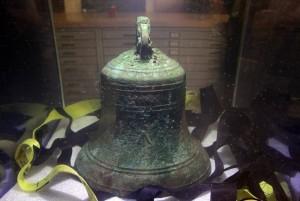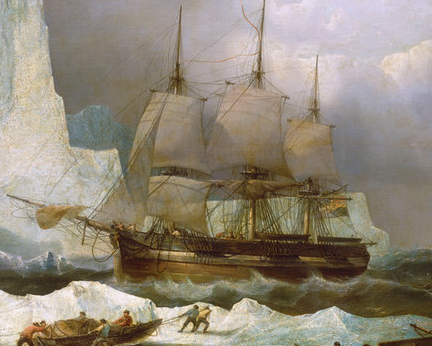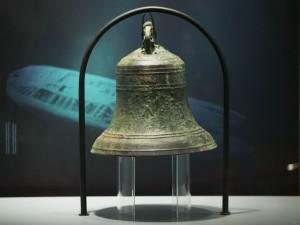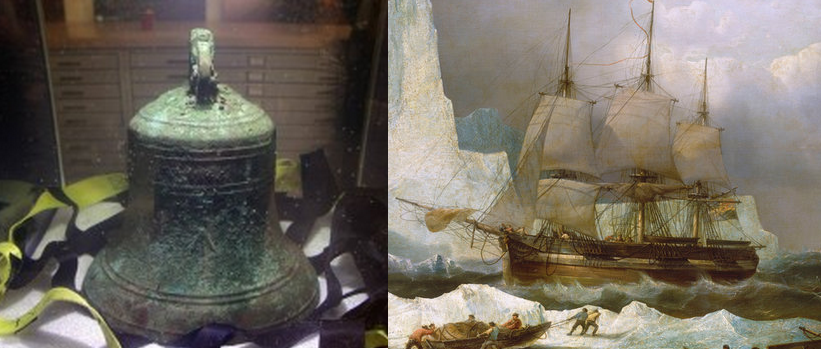Among its many applications, 3D printing plays the exciting role of filling in mysterious gaps in history, giving actual form to things previously only imagined. That’s the case with the centerpiece of a new exhibition on the tragic 1845 expedition of Rear Admiral Sir John Franklin: the full-scale, 3D printed replica of the ship’s bell from the HMS Erebus.
On May 19, 1845, Franklin and his crew of 24 officers and 110 men on the two ships, HMS Erebus and HMS Terror, both modern in their day featuring steam engines that made them quite speedy, set out from Greenhithe, England on their mission to find the Northwest Passage. Their route took them north to Aberdeen, Scotland and on to the Orkney Isles where they picked up supplies. From there, they made their way to Greenland escorted by two other ships. Evidently, they misjudged the location of Whitefish Bay in Greenland’s Disko Island, backtracked, found the bay, and eventually harbored for a time before setting out again.
featuring steam engines that made them quite speedy, set out from Greenhithe, England on their mission to find the Northwest Passage. Their route took them north to Aberdeen, Scotland and on to the Orkney Isles where they picked up supplies. From there, they made their way to Greenland escorted by two other ships. Evidently, they misjudged the location of Whitefish Bay in Greenland’s Disko Island, backtracked, found the bay, and eventually harbored for a time before setting out again.
Later, it was determined the two ships and their respective crews spent the winter on Beechey Island, part of the Canadian Arctic Archipelago of Nunavut, Canada in the Wellington Channel. The ships were evidently moored to an iceberg. The ships became trapped in ice off of King William Island in September of 1846 and were never freed. A note found later on the island indicated that Franklin died there on June 11, 1847. The entire crew perished as well. American and British searches looked in vain for the two ships.
In September 2014, the Canadian government announced that researchers had located the HMS Erebus in its final resting place on the seafloor. Evidently, Inuit elders in the area had known of the ship’s location there for years. It is almost certain that Franklin had been on that particular ship. The HMS Terror has not been located.
While much of the HMS Erebus has suffered from decay, the brass bell is surprisingly still completely intact and has been used to create its full-scale, 3D printed replica. The bell was discovered on the deck of the Erebus and features a date stamp of “1845” as well as a property mark particular to the British government.
Franklin’s expedition is considered an important episode in Canadian history and thus the exhibition — and its 3D printed starring object, the bell — is expected to draw thousands of visitors to the Royal Ontario Museum in Toronto, Canada. The exhibition will actually travel to seven museum throughout Canada. One of the exciting aspects of the discovery of the HMS  Erebus is its confirmation of the critical role of Inuit testimony in assisting researchers in locating the ship’s remains and, moreover, the validity and richness of the Inuit oral tradition.
Erebus is its confirmation of the critical role of Inuit testimony in assisting researchers in locating the ship’s remains and, moreover, the validity and richness of the Inuit oral tradition.
The 3D replica is remarkable in its fidelity to the HMS Erebus’ original brass bell, resembling the state in which it was found rather than the way it must have looked when it was new. It isn’t clear how the replica was produced but the 3D printed object is impressive and convincing.
Let us know what you think of this replicated piece of history over at the 3D Printed HMS Erebus Bell forum thread at 3DPB.com. Additional information on this story can be seen in the video below:
Subscribe to Our Email Newsletter
Stay up-to-date on all the latest news from the 3D printing industry and receive information and offers from third party vendors.
You May Also Like
Gorilla Sports GE’s First 3D Printed Titanium Cast
How do you help a gorilla with a broken arm? Sounds like the start of a bad joke a zookeeper might tell, but it’s an actual dilemma recently faced by...
Nylon 3D Printed Parts Made More Functional with Coatings & Colors
Parts 3D printed from polyamide (PA, Nylon) 12 using powder bed fusion (PBF) are a mainstay in the additive manufacturing (AM) industry. While post-finishing processes have improved the porosity of...
$25M to Back Sintavia’s Largest Expansion of Metal 3D Printing Capacity Since 2019
Sintavia, the digital manufacturing company specializing in mission-critical parts for strategic sectors, announced a $25 million investment to increase its production capacity, the largest expansion to its operations since 2019....
Velo3D Initiates Public Offering in a Bid to Strengthen Financial Foundations and Drive Future Growth
Velo3D (NYSE: VLD) has been among a number of publicly traded 3D printing firms that have attempted to weather the current macroeconomic climate. After posting a challenging financial report for 2023,...































